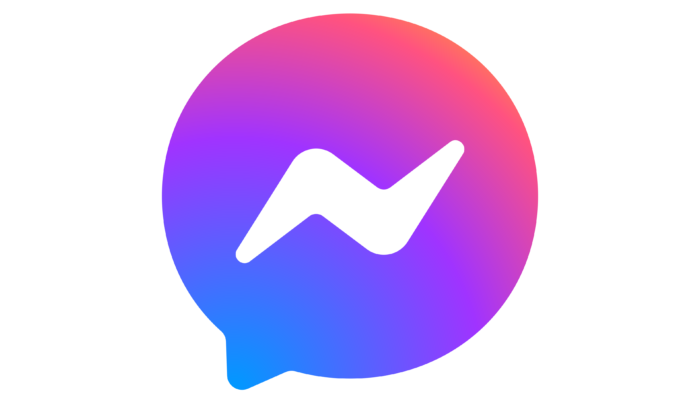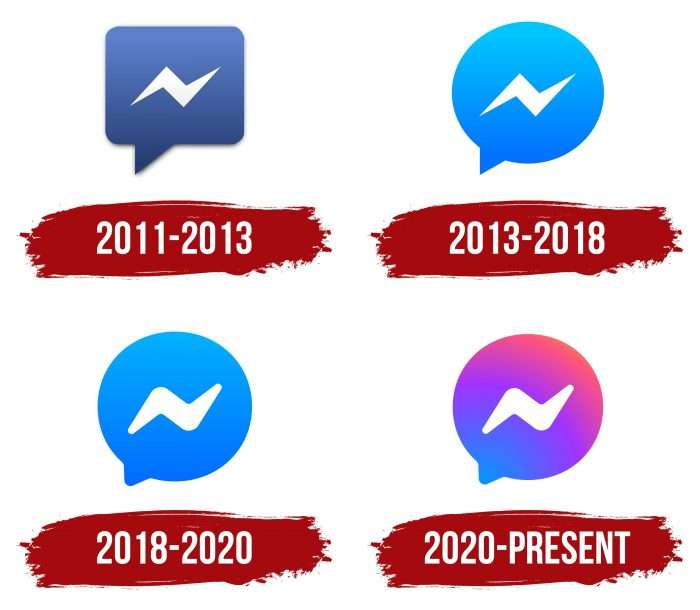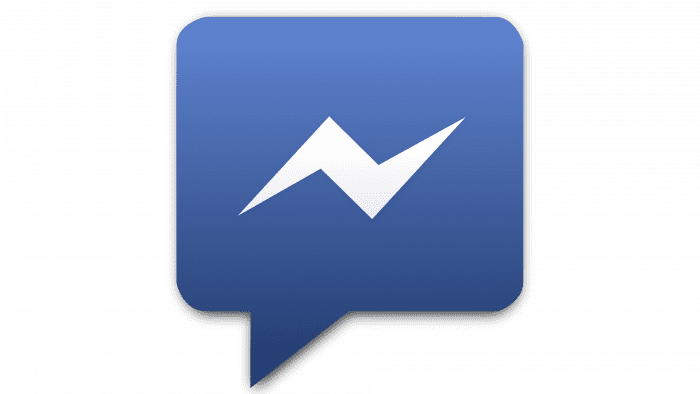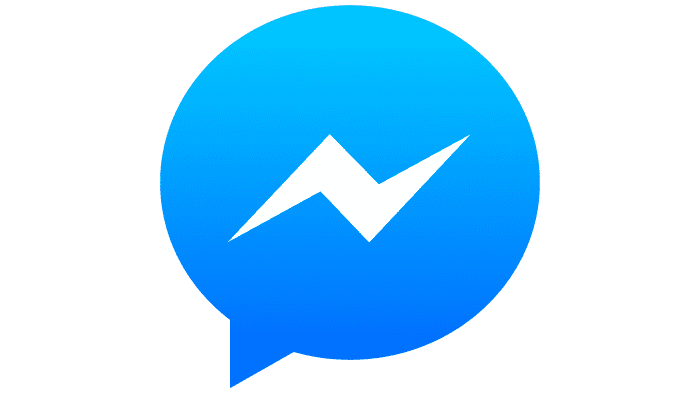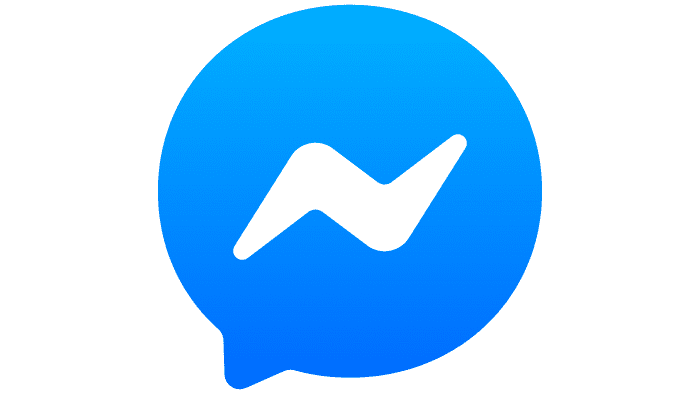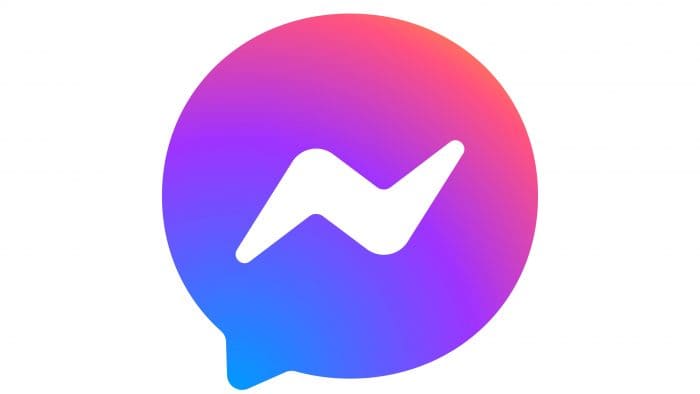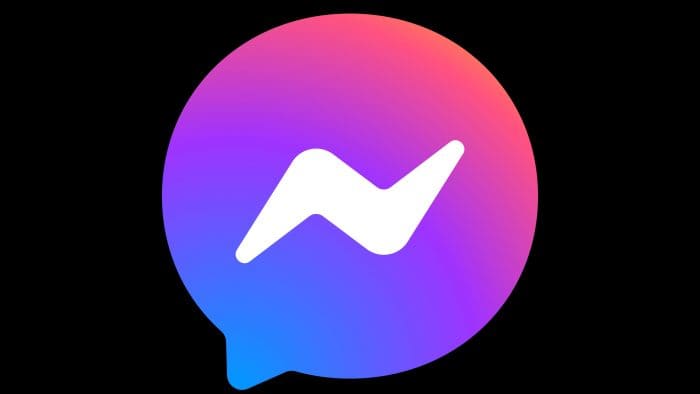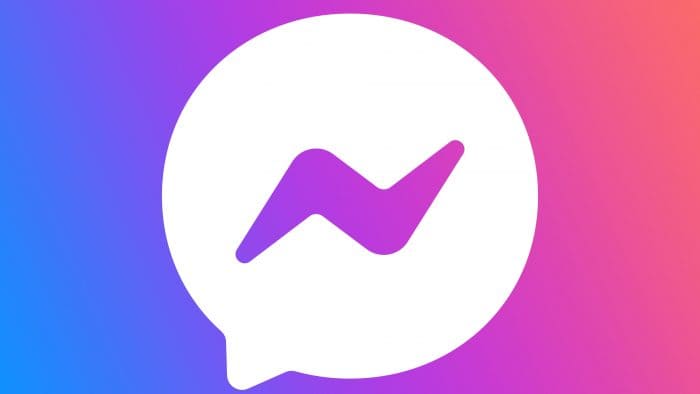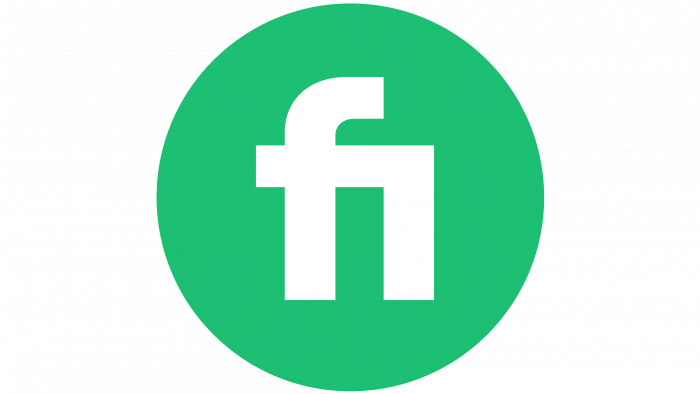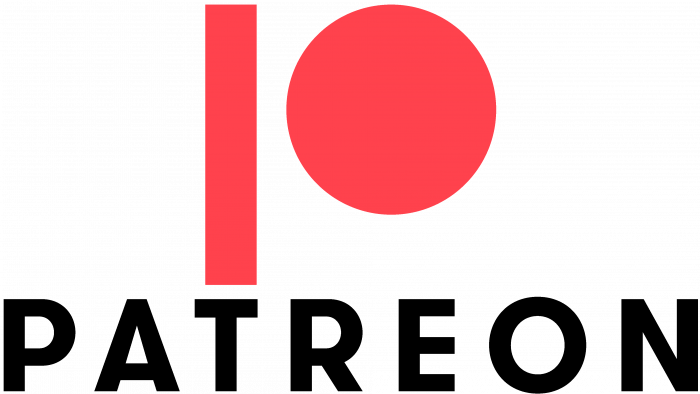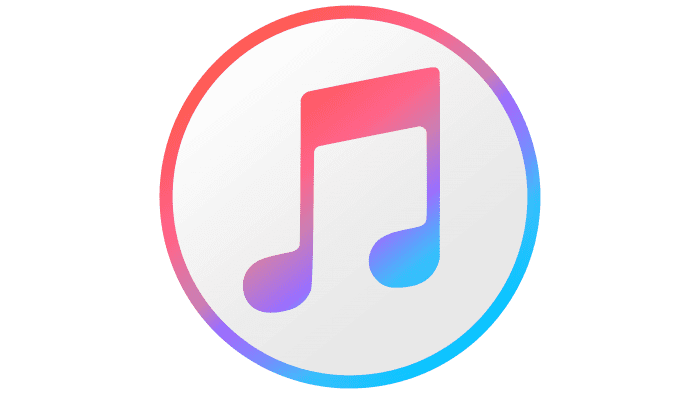“Attention. A message has arrived for you,” reads the Facebook Messenger logo. The emblem indicates that messages are delivered as fast as lightning. This allows for an ongoing dialog – the sign hints at the messenger’s ability to convey emotions, thoughts, and ideas.
Facebook Messenger: Brand overview
Facebook Messenger connects millions of people from different countries. It was created in 2011 as an alternative to Facebook Chat, but in addition to messaging, it supports video calls and phone conversations. It is a free application that is suitable for many operating systems and adapted for iPad tablets. Even those who don’t have an account on Mark Zuckerberg’s social network can connect to it.
Meaning and History
Messenger allows you to communicate and share media files freely. It is also closely related to Instagram Direct Messages: users of both services can send messages to each other without downloading the second app. This was made possible in 2020 after the integration of the two platforms. The unexpected merger is reflected in the interface of Facebook Messenger and in the logo. The icon, which remained blue for a long time, now has a pink gradient. Before that, only the shape changed, and the color shades always remained within the same palette.
What is Facebook Messenger?
This is the name of the messenger created by Meta Platforms, Inc. in 2011. It is integrated with Facebook Chat, allows you to send text messages and files in various formats, and is suitable for many operating systems. There are versions for mobile devices and PCs.
2011 – 2013
The first logo for the standalone Messenger app was a rectangular callout with rounded corners and a triangular protrusion at the bottom. Inside was a white zigzag element. The basic shape was blue; the designers used a gradient and added a gray shadow around the edges to create a 3D effect.
The iOS app icon looked slightly different. In this version, the dialog cloud was white and silver and got a square blue border with a light stripe at the bottom. The lightning bolt also turned blue.
2013 – 2018
After the update, the leader became round. The color became brighter and lighter. The gradient remained, but the transition of shades became almost imperceptible.
2018 – 2020
The emblem with rounded corners was used for two years. The shape of the dialog cloud changed slightly, but the palette remained the same.
2020 – today
In 2020, Messenger merged with another messaging service, Instagram Direct Messages. Two weeks after the integration, Facebook unveiled an updated logo for the app, painting the familiar circle in new colors. Thus, an additional gradient of orange, pink, and purple shades appeared.
The messenger icon resembles a dialog cloud, which is usually used in comics to illustrate the speech of characters. This simple symbol reveals the main purpose of the service: to help people communicate freely with each other, regardless of distance.
The design of the logo is very simple. It consists of three geometric shapes: a large circle (“bubble”), a small triangle (the part of the call, usually facing the speaker), and a zigzag (a distinctive feature of Facebook Messenger). After the redesign, the icon began to indicate the program’s close relationship with Instagram. The rounded edges symbolize friendliness.
Facebook Messenger: Interesting Facts
Facebook Messenger, originally a part of Facebook, became its app in 2011, becoming a major messaging platform with various features.
- Becoming Its Own App: Starting as a feature in 2008, Messenger launched its app in 2011 to focus on messaging and compete in the app market.
- Widespread Use: It’s become incredibly popular, with billions of users thanks to its connection to Facebook’s vast network.
- More Than Texts: Messenger has added voice and video calls, group chats, stickers, and GIFs, becoming a versatile communication tool.
- Useful for Businesses: The app helps businesses with automated bots, customer service, and the ability to sell products directly on the platform.
- Privacy Measures: To address privacy concerns, Messenger adds end-to-end encryption, ensuring messages are seen only by the sender and receiver.
- Messenger Kids: In 2017, Facebook introduced Messenger Kids for children under 13, featuring parental controls for a safer online experience.
- Fun with AR: The app includes AR filters and effects for video chats and stories, making conversations more engaging.
- Games in the App: Instant Games allows users to play games with friends without leaving the app.
- Sending Money: In some places, Messenger allows for sending and receiving money, simplifying user transactions.
- Connecting with Other Apps: Facebook is integrating Messenger with Instagram and plans to connect it with WhatsApp for a unified messaging experience.
Messenger’s transformation into a feature-rich platform for personal, group, and business communication reflects the evolving need for digital interaction, making it a key player in how people connect online.
Font and Colors
The logo serves as the app’s icon, so it does not contain any lettering. It does not even have individual letters, although the dialog cloud suggests text. This ceased to be a problem recently, as the designers recolored the pattern, adding the traditional Instagram ultraviolet gradient. The mottled palette looks self-sufficient and does not need any additions. If there are technical limitations, Messenger owners allow the use of a black-and-white version.
Until 2020, the emblem of the messaging service was blue. The same color (although in a different version) is part of Facebook’s corporate identity. It was chosen by Mark Zuckerberg himself, who, due to color blindness, does not perceive the red-green spectrum well and perfectly distinguishes all shades of blue.
Facebook Messenger color codes
| Pastel Red | Hex color: | #ff6968 |
|---|---|---|
| RGB: | 255 105 104 | |
| CMYK: | 0 59 59 0 | |
| Pantone: | PMS 178 C |
| Veronica | Hex color: | #a33afa |
|---|---|---|
| RGB: | 163 58 250 | |
| CMYK: | 35 77 0 2 | |
| Pantone: | PMS 2592 C |
| Dodger Blue | Hex color: | #0695ff |
|---|---|---|
| RGB: | 6 149 255 | |
| CMYK: | 98 42 0 0 | |
| Pantone: | PMS 2727 C |
FAQ
What do the different Facebook Messenger symbols mean?
Facebook Messenger symbols indicate the status of a message. A blue circle with a blue check mark means that the message has been delivered but not read. If the circle is white and the checkmark is blue, the message has been sent but has not yet arrived. An empty white circle in a blue ring means that it is in the process of being sent. And if there’s a mini photo in front of the message, it means it’s already been read.
What do Facebook Messenger icons mean?
Facebook Messenger’s icon system is used by users to see what’s happening with their messages at any given moment. It can be in the process of being sent (empty open circle), sent (open circle with a checkmark), delivered (filled circle with a checkmark), and read (image of the recipient’s mini profile picture).
